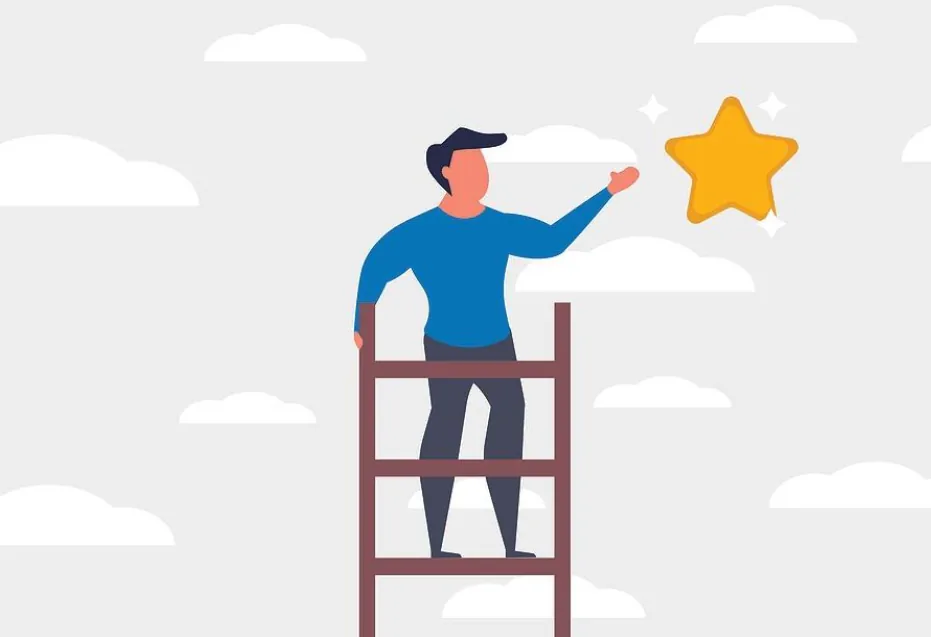
Intrigued by how your learners bridge the gap between the known and the unknown? Let’s explore this through the lens of Lev Vygotsky’s thought-provoking theories: the Zone of Proximal Development (ZPD) and Scaffolding.
ZPD is the captivating space between a learner’s solo capabilities and the potential heights they can reach with the aid of an experienced guide. Scaffolding, in comparison, is an educational framework that offers learners temporary support as they stride towards their objectives.
In this blog, we’ll be delving into both of these concepts, examining how best they can be employed in various eLearning content contexts and the potential challenges you might experience when implementing Vygotsky’s work. Stay with us as we unpack these fascinating educational concepts.

Definition of Vygotsky’s Zone of Proximal Development (ZPD)
Initially introduced by Soviet psychologist Lev Vygotsky, the Vygotsky Zone of Proximal Development is considered a space between two distinct phases of learning:
- What the learner can do without any assistance
- What the learner can do with the help from a mentor/tutor or collaboration with their peers
In other words, the Zone of Proximal Development is the point where a learner is close (i.e., proximal) to mastering a particular skill. At this point, instruction is especially valuable because it helps push the learner from needing help from others to being able to progress independently.
Vygotsky also argued that when a learner is in the Zone of Proximal Development for a specific task, the appropriate assistance will give them the boost they need to finally master it. To receive that boost, learners need the following:
- The presence of someone with more knowledge and skills than they have.
- Social interactions with a skilful tutor/mentor, which allows the learner to observe and practice.
- Scaffolding (supportive activities) that offer the learner additional guidance.
When these three things are provided, the learner has the support and resources they need to move out of the Zone of Proximal Development into the stage of mastery.

Learn How To Create Personal Learning Journeys For FREE!
What is the Theory of Scaffolding?
Vygotsky’s scaffolding concept comprises a series of activities that an educator or more competent peer provides.
These activities support the learner as they’re led through the Zone of Proximal Development. Over time, the support is gradually withdrawn, similar to how scaffolds are removed during building construction, to give the learner a chance to complete tasks independently.
It’s important to note that Vygotsky never used the term “scaffolding” in his work. The researchers Wood, Bruner, and Ross have been credited with using it in their 1976 The Role of Tutoring in Problem Solving paper. However, it remains tied to Vygotsky and his theory to this day.
Explanation of Scaffolding in the Context of ZPD
When they coined the term scaffolding, Wood, Bruner, and Ross defined it as a process that allows novice learners to solve tasks and achieve goals beyond what they could accomplish on their own.
To be effective, scaffolds must include a more skilled learner who controls specific elements of a task – those that are beyond the learner’s capabilities at the time. This control allows the learner to concentrate on mastering a particular component before moving on to other aspects.
The Importance of ZPD and Scaffolding in Learning and Development
Even though Vygotsky never used the term scaffolding, the concept is still an essential part of this learning theory and helps learners move out of the Zone of Proximal Development.
Instructors and skilled peers can use the scaffolding learning theory to assist novice learners as they work toward reaching specific goals. When a learner is in the Zone of Proximal Development, scaffolding may look like this:
- The instructor or peer introduces a series of small, manageable steps to break down the learner’s goal and make it more manageable.
- These steps allow the learner to make connections between concepts continuously.
- As the learner grows within the ZPD, their confidence increases, and they continue practising new tasks (with social support from an instructor or their peers).
- This practice, paired with meaningful, thoughtful, and purposeful interactions, helps learners continue learning until they eventually exit the ZPD and can work independently.
For scaffolding to be effective, Vygotsky noted the importance of proper communication and strong relationships. For example, he argued that a relationship between a learner and instructor was central to learning.


Best Practices for Incorporating ZPD and Scaffolding
Whether you’re developing eLearning content or crafting lesson plans for in-person training, incorporating the Zone of Proximal Development and scaffolding techniques can yield remarkable results. To ensure the highest likelihood of success, consider implementing the following best practices:
1. Identify Each Learner’s ZPD
For scaffolding and Vygotsky’s ideas to be effective, you will need to understand each learner’s specific ZPD and acknowledge that every learner will be unique and will learn at their own pace and in different ways.
Regular evaluations and assessments to analyse different training needs can help you to identify what learners understand and what areas they need to focus on moving forward. From here, you can work with them to create tailored plans or personal learning journeys and help them progress.
2. Encourage Group Work
Group work naturally encourages learners to talk and learn from one another.
Putting learners with different ZPDs in groups creates opportunities for peers with more knowledge to assist those who need additional support. Sometimes, it’s easier for learners to learn from people their own age or in the same position compared to an instructor.
An added bonus of this approach is that group work can allow learners with more knowledge to further cement their understanding and develop their strengths.
3. Don’t Offer Too Much Help
Don’t make the mistake of giving learners too much guidance while trying to help them move from the Zone of Proximal Development to understanding and mastery. Excessive guidance defeats the purpose of scaffolding and doesn’t create opportunities for them to learn, test their skills, and gain confidence.
4. Activate Prior Knowledge
A critical part of assessing a learner’s ZPD and helping them gain new knowledge is understanding what they already know.
When an instructor is aware of the learner’s prior knowledge, they can formulate and ask more appropriate questions – questions that will fill in the gaps in the learner’s understanding and aid them in their transition to mastering a particular subject or topic.
Activating prior knowledge may also help to boost the learner’s confidence. Reminding them of what they already know will reduce frustration and remind them that they have the potential to learn new things.
5. Use Mini Lessons
Also known as microlearning, breaking lessons or training into smaller, more manageable chunks can help learners stay engaged, reduce frustration, and improve their retention efforts.
Resist the urge to cram as much information into a training session as possible. Instead, it will likely be more beneficial to keep lessons short and to give learners more opportunities to process and talk through what they’ve learned.
6. Make Time for Processing
By using mini-lessons you will naturally save some time and enable learners to process information more effectively.
Try offering low-stakes opportunities such as role-plays or short quizzes after the training, so learners can consolidate their learning and reinforce the knowledge acquired during the lessons. These activities not only assist learners in retaining information better, but also make the learning enjoyable, increasing their engagement and motivation to learn.


Challenges in Implementing ZPD and Scaffolding Theory in eLearning
While the theory offers plenty of benefits, it’s not applicable to every learning situation.
The following are some potential challenges you might experience when implementing Vygotsky’s work into your eLearning or training (with suggestions for overcoming them):
- Limited opportunities for social interaction and collaboration: Vygotsky emphasised the importance of social interaction and collaboration in the learning process. However, eLearning can sometimes be isolating and lack opportunities for learners to interact with their peers.
Solution: Incorporate collaborative activities such as group projects, discussion forums, and peer review into the eLearning platform to encourage social interaction and collaboration.
- Lack of scaffolding: Vygotsky’s theory of scaffolding suggests that learners can benefit from the support of a more knowledgeable other who provides guidance and assistance. However, eLearning materials may not always provide sufficient support for learners.
Solution: Include supportive resources such as tutorials, guides, and feedback to provide learners with the guidance and assistance they need to progress through the learning materials.
- Over-reliance on technology: Vygotsky’s theory emphasises the importance of the interaction between learners and their environment, but eLearning may rely too heavily on technology, potentially leading to a lack of real-world application.
Solution: Incorporate real-world scenarios and practical activities into eLearning materials to help learners apply their knowledge and skills in context.
- Limited opportunities for reflection: Vygotsky’s theory suggests that learners can benefit from reflecting on their own learning experiences. However, eLearning materials may not always provide opportunities for learners to reflect.
Solution: Include reflection prompts and activities that encourage learners to think about their learning and how they can apply it to real-world situations.
- Accessibility issues: ELearning may not be accessible to all learners, including those with disabilities or those without access to technology.
Solution: Ensure that eLearning materials are designed with accessibility in mind and provide alternative formats such as transcripts or captions for videos to ensure that all learners can access the materials. Additionally, consider providing technology or other resources to learners who may not have access to them otherwise.
Wrapping up
Implementing the Vygotsky theory of cognitive development – specifically, the Zone of Proximal Development and scaffolding – can help you minimise learner frustration, encourage a growth mindset, and maintain consistent progress toward achieving specific learning objectives.
By following the suggestions and best practices outlined in this guide, you can effectively harness Vygotsky’s principles and provide comprehensive support to your learners. By doing so, you can greatly enhance their learning experience and promote deeper understanding and retention of the material. Take the first step today, towards creating a personalized eLearning course using Vygotsky’s teachings.
As an eLearning company, Skillshub is committed to creating efficient and impactful learning experiences.
Don’t miss out on the opportunity to enhance your training and development efforts. Get in touch with Skillshub today to learn more about our bespoke eLearning content options and our slick eLearning Platform.
















